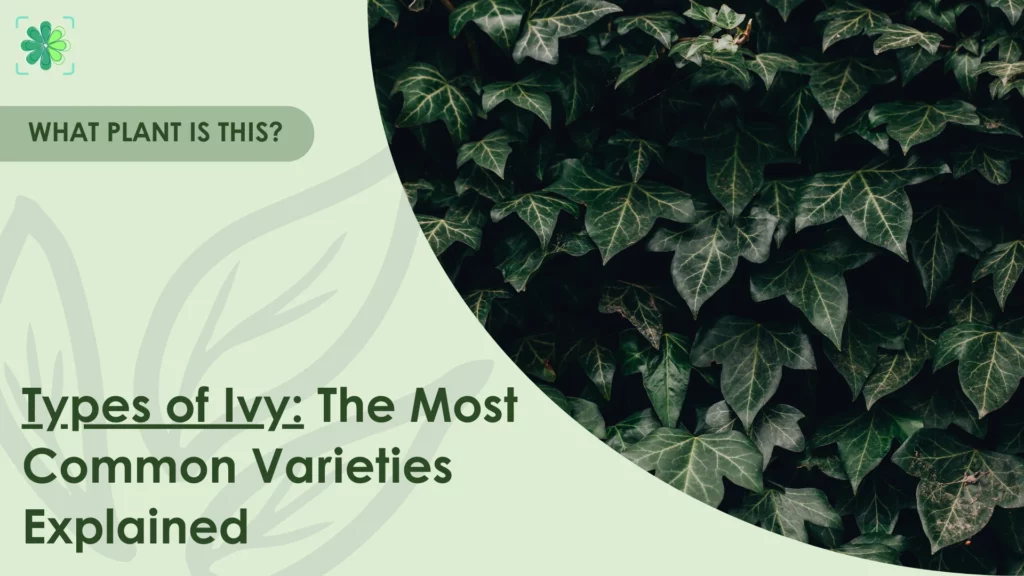
Ivy can be charming or troublesome, depending on the type and where it grows. Some ivy varieties are popular indoor plants or decorative climbers, while others are invasive or even poisonous. In this guide, you’ll learn about the most common types of ivy, how to recognize them by their leaves, and which ones to avoid. Whether you’re planting, pruning, or just curious, this article will help you tell the difference at a glance. Let’s come with me now!
Key Features to Recognize Ivy
Start by looking at the leaves, which often give the clearest clues:
- Shape: Common ivy leaves are usually lobed, with three to five points. Poison ivy, on the other hand, has three leaflets per cluster and smoother edges.
- Texture: Some leaves are glossy and leathery (like English ivy), while others are softer and more velvety (like Persian ivy).
- Color: Ivy can range from deep green to light green, and some types even have variegated patterns with white or yellow edges.
- Arrangement: Pay attention to how leaves grow on the stem. Ivy leaves tend to alternate along the vine, while poison ivy’s leaflets often form tight clusters.
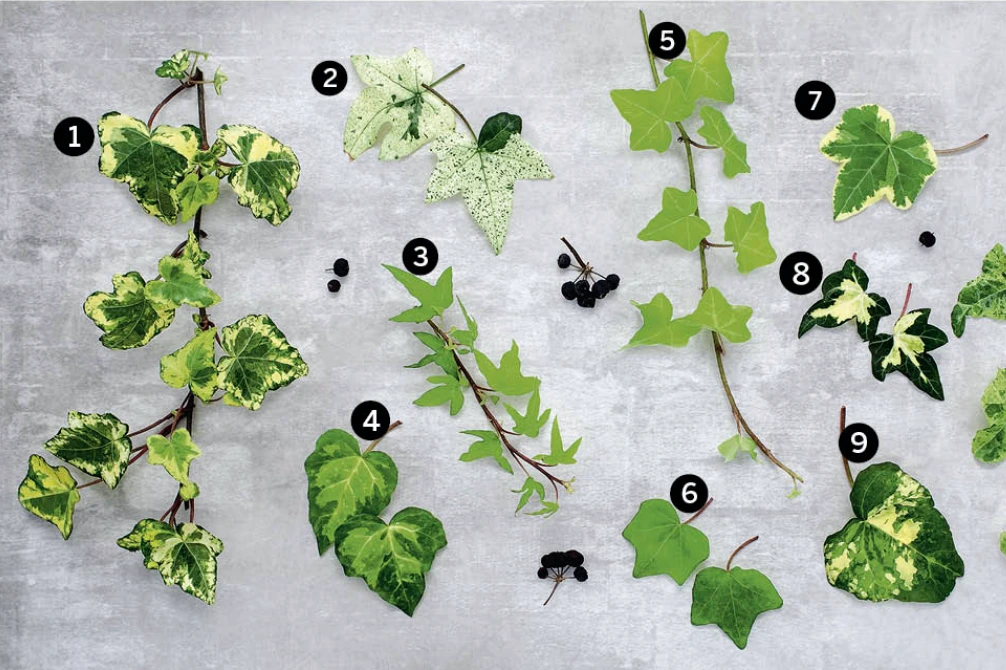
Next, check the growth pattern of the plant:
- Climbing: Many ivy types use rootlets or tendrils to attach to walls, fences, or trees.
- Trailing: Some ivies spread across the ground or spill over containers, like Swedish ivy or grape ivy.
- Creeping: Weedy ivies like ground ivy stay low and form dense mats instead of climbing.
Finally, consider the location and behavior:
- Indoor vs. outdoor: Decorative types of ivy tend to be potted or trellised, whereas wild or weedy ivy often grows in open soil, climbs trees, or takes over fences.
- Controlled or spreading: A neat, trimmed vine is likely to belong to a managed garden. If the ivy appears to be growing aggressively or spreading rapidly, it may be invasive or even toxic.
15+ Must-Know Types of Ivy
There are many types of ivy, but not all of them serve the same purpose. Some are perfect for homes or gardens, while others can be harmful or hard to control. Below are 12+ ivy varieties, grouped into 3 categories to help you identify them more easily.
Common and Ornamental Ivies
1. English Ivy
This is the most recognized ivy species, often seen climbing brick walls or trailing from hanging baskets. It has lobed, glossy leaves that vary in shape and size depending on the variety. Outdoors, it can be aggressive, but indoors, it’s easier to manage and purifies the air well.
- Native Area: Europe, Western Asia
- USDA Growing Zones: 4 to 9
- Sun Exposure: Partial shade to full shade
- Height: 6 to 12 inches (groundcover) or 20 to 50 feet (climbing)
- Soil pH: Slightly acidic to neutral
- Soil Type: Moist, well-drained
- Care Tip: Prune regularly to control spread, especially outdoors
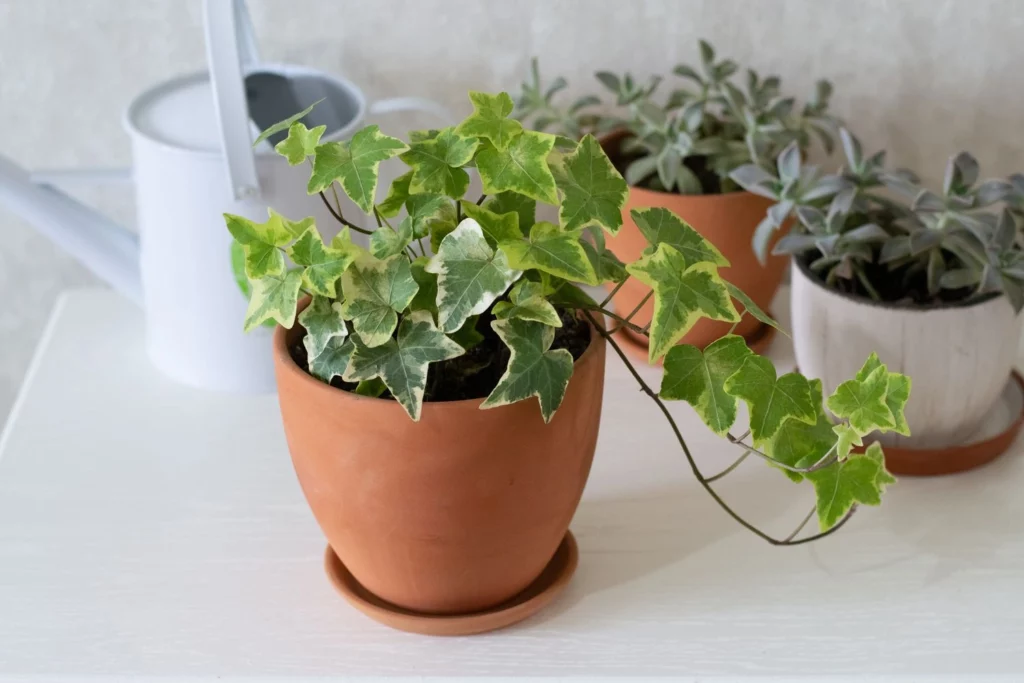
2. Algerian Ivy
With its broader leaves and bolder appearance, Algerian ivy brings lush greenery to shaded areas. It’s more heat-tolerant and has a glossy, leathery texture that stands up well in warmer climates. Not ideal for freezing regions.
- Native Area: North Africa
- USDA Growing Zones: 7 to 11
- Sun Exposure: Full sun to full shade
- Height: 10 to 40 feet
- Soil pH: Slightly acidic to neutral
- Soil Type: Moist, fertile, well-drained
- Care Tip: Protect from frost and prune to manage growth
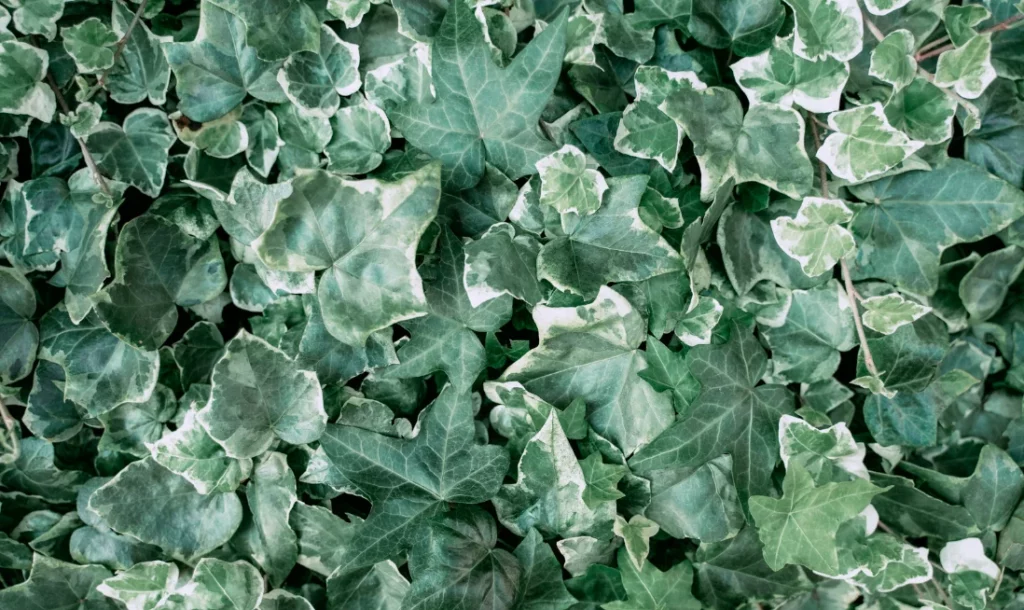
3. Persian Ivy
Known for its large, heart-shaped leaves, Persian ivy is one of the most visually striking types of ivy. It grows quickly and clings well to walls or fences. It’s also more tolerant of hot summers than English ivy.
- Native Area: Middle East
- USDA Growing Zones: 6 to 9
- Sun Exposure: Partial to full shade
- Height: 10 to 50 feet
- Soil pH: Neutral to slightly alkaline
- Soil Type: Moist, rich, well-drained
- Care Tip: Give it room to spread and protect it from harsh frost
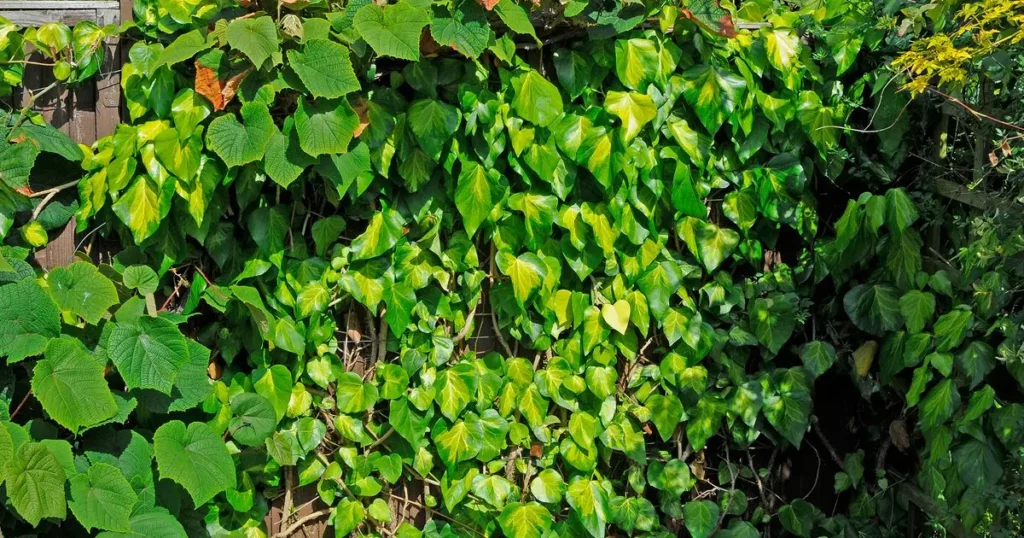
4. Irish Ivy
Often confused with English ivy, Irish ivy grows more vigorously and has glossier, slightly larger leaves. It’s excellent for erosion control and tolerates coastal wind and salt well.
- Native Area: Western Europe
- USDA Growing Zones: 5 to 9
- Sun Exposure: Partial shade to full sun
- Height: 20 to 50 feet
- Soil pH: Neutral
- Soil Type: Moist, well-drained
- Care Tip: Train early if climbing; prune often to prevent overgrowth
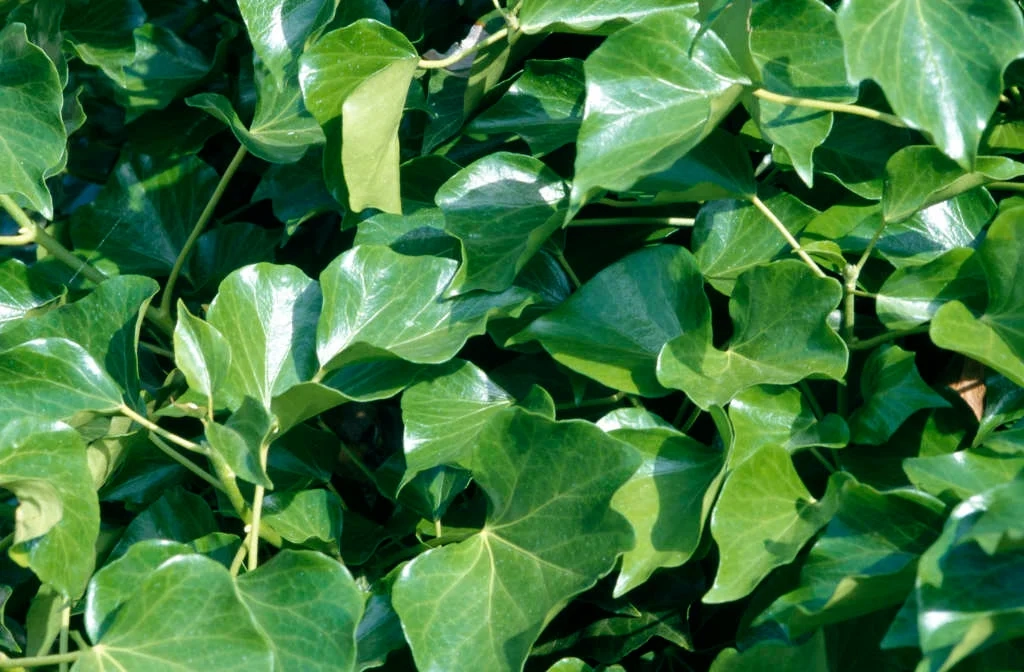
5. Swedish Ivy
Despite its name, Swedish ivy isn’t a true ivy. It’s a trailing houseplant with rounded, scalloped leaves and small purple or white flowers. It thrives in hanging baskets and doesn’t climb on its own.
- Native Area: South Africa
- USDA Growing Zones: 10 to 11 (houseplant in cooler zones)
- Sun Exposure: Bright indirect light
- Height: 1 to 2 feet (trailing habit)
- Soil pH: Slightly acidic
- Soil Type: Well-drained potting mix
- Care Tip: Water when the topsoil feels dry, and avoid cold drafts
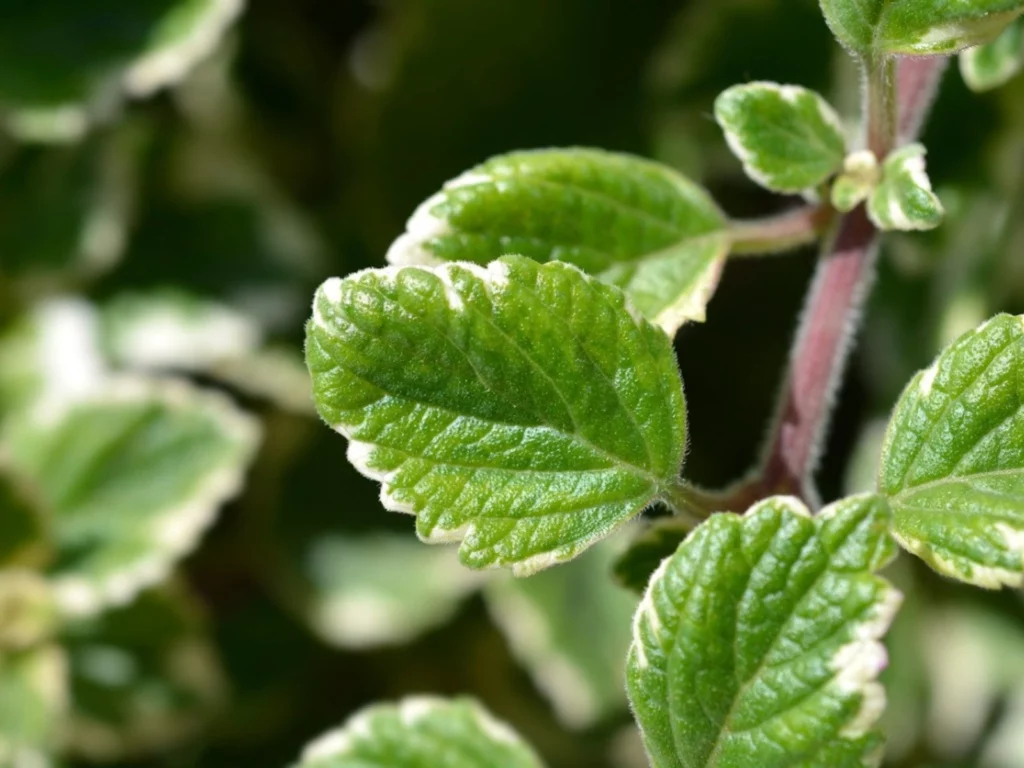
6. Boston Ivy
Often seen covering buildings with fiery fall color, Boston ivy is one of the most eye-catching types of ivy. This fast-growing climber uses adhesive pads to stick to surfaces. Its glossy green leaves turn brilliant shades of red and purple in autumn, making it a seasonal standout.
- Native Area: East Asia
- USDA Growing Zones: 4 to 8
- Sun Exposure: Full sun to part shade
- Height: 30 to 50 feet
- Soil pH: Slightly acidic to neutral
- Soil Type: Moist, well-drained
- Care Tip: Prune in late winter to manage spread and maintain shape
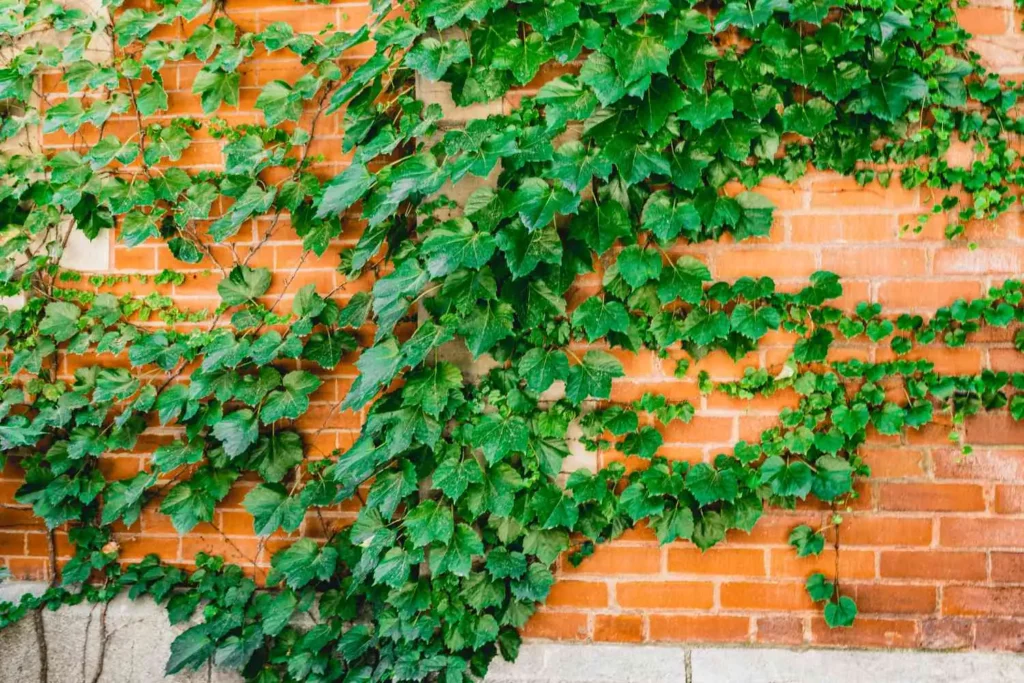
7. Grape Ivy
Grape ivy is a non-clinging climber known for its elegant, compound leaves that resemble grape foliage. It climbs with tendrils and is often grown as a decorative houseplant in hanging baskets or trained on supports.
- Native Area: Central and South America
- USDA Growing Zones: 10 to 11
- Sun Exposure: Bright, indirect light indoors or partial shade outdoors
- Height: 6 to 10 feet
- Soil pH: Neutral
- Soil Type: Well-drained, rich potting soil
- Care Tip: Keep soil slightly moist and mist occasionally for humidity
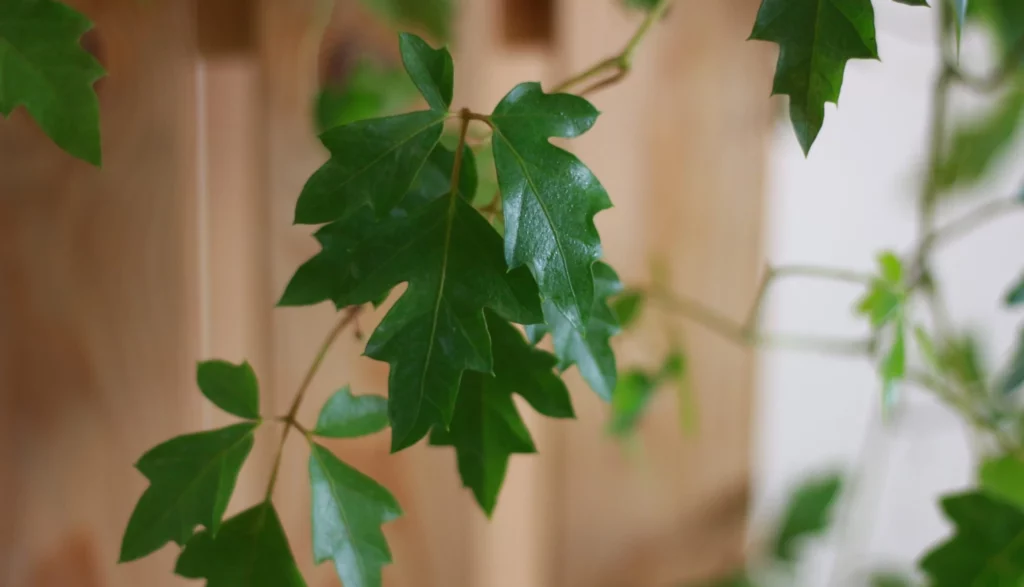
8. Canary Island Ivy
This bold ivy has thick, leathery leaves and a strong climbing habit. It grows faster and larger than English ivy, making it ideal for covering large fences or walls quickly in warmer climates.
- Native Area: Canary Islands
- USDA Growing Zones: 8 to 11
- Sun Exposure: Full sun to part shade
- Height: 20 to 60 feet
- Soil pH: Slightly acidic to neutral
- Soil Type: Moist but well-drained
- Care Tip: Watch for aggressive spread; trim regularly to manage growth
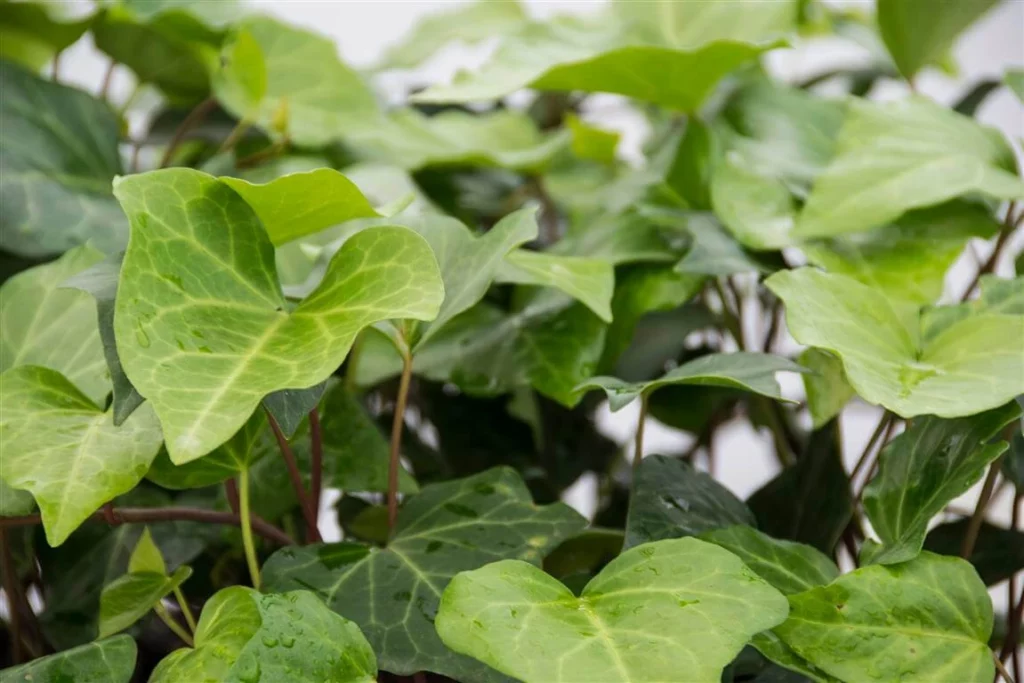
9. Ivy Geranium
Although not a true ivy, the ivy geranium has trailing stems and ivy-shaped leaves, which resemble some types of ivy, making it a popular choice for window boxes. It produces colorful flowers throughout the warm season and thrives in sunny spots.
- Native Area: South Africa
- USDA Growing Zones: 10 to 11 (or grown as an annual)
- Sun Exposure: Full sun to light shade
- Height: 1 to 2 feet tall, 2 to 3 feet spread
- Soil pH: Neutral
- Soil Type: Well-drained, fertile
- Care Tip: Deadhead spent blooms to extend flowering and prevent legginess
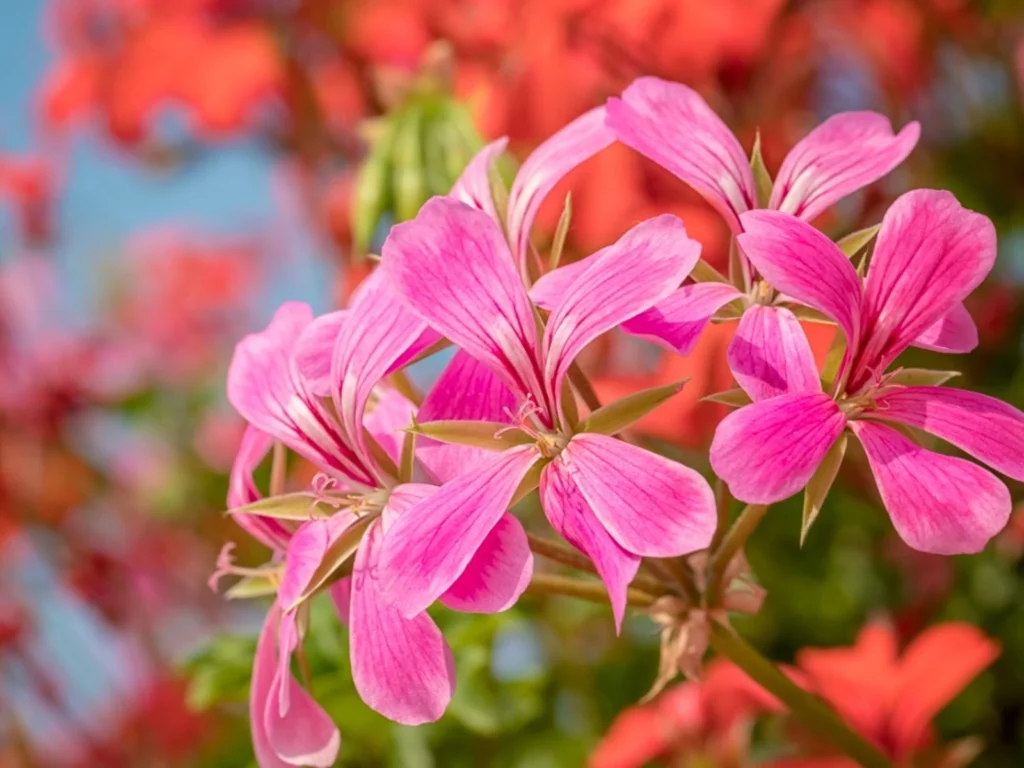
Poisonous Ivy Types
10. Eastern Poison Ivy
This is the most common type in North America. It usually appears as a climbing or trailing vine with stems that produce hairy aerial roots. Its leaves grow in clusters of three and change color with the seasons: green in spring and summer, red or orange in fall.
- Native Area: Eastern North America
- USDA Growing Zones: 3 to 10
- Sun Exposure: Full sun to deep shade
- Height: Can trail low or climb up to 60 feet
- Soil pH: Slightly acidic to neutral
- Soil Type: Adaptable but prefers moist, well-drained soil
- Care Tip: Do not touch. All parts contain urushiol oil, which causes skin irritation
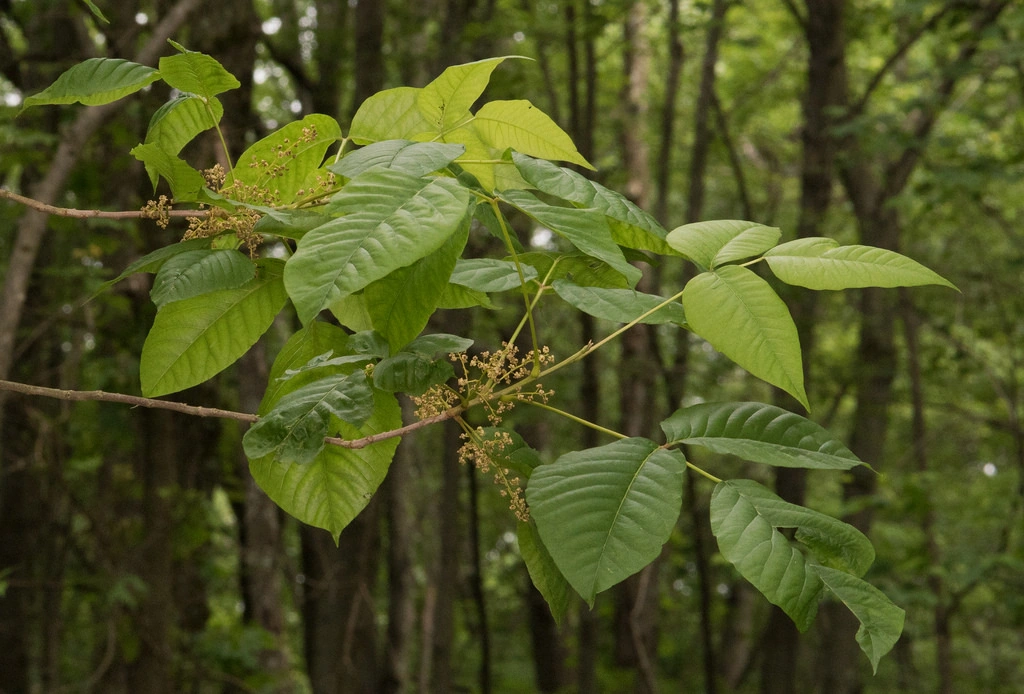
11. Western Poison Ivy
Found chiefly in the central and northern U.S., this type typically grows as a small shrub rather than a vine. It has the same three-leaflet structure and allergenic properties as other poison types of ivy but tends to stay lower to the ground.
- Native Area: Central and Western North America
- USDA Growing Zones: 3 to 8
- Sun Exposure: Part shade to full sun
- Height: 1 to 3 feet as a shrub
- Soil pH: Neutral
- Soil Type: Well-drained, sandy or loamy soil
- Care Tip: Wear gloves and long sleeves when removing; roots can still spread irritants
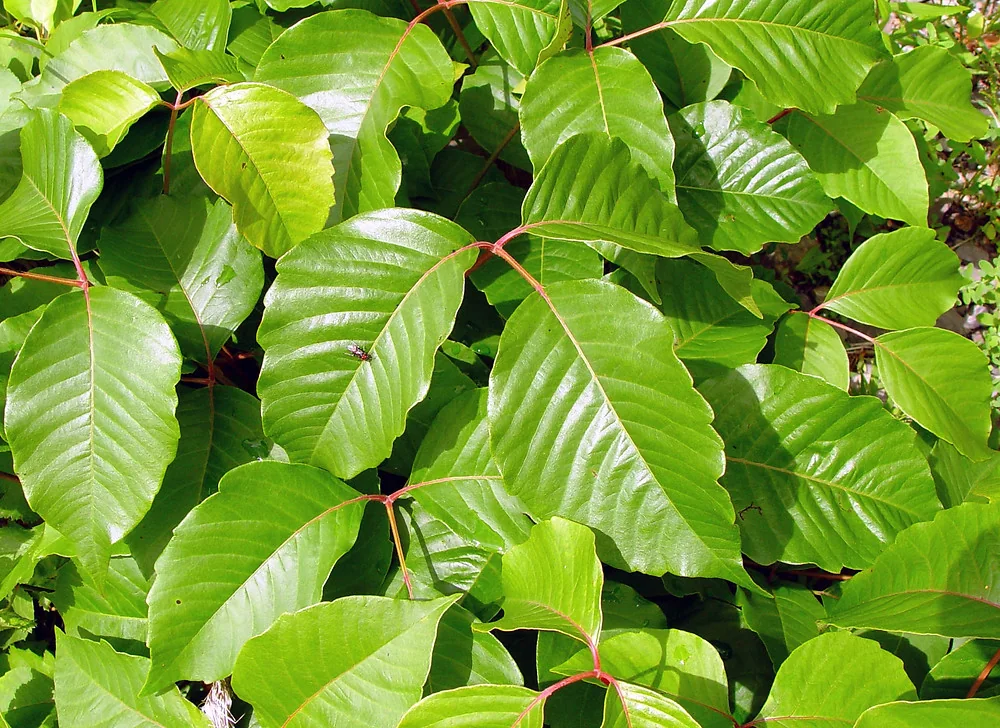
13. Atlantic Poison Ivy
A coastal variant of Eastern poison ivy, it grows along the Atlantic Seaboard and in some Southeastern states. It behaves similarly, climbing or sprawling, and can even appear in sand dunes or forest edges.
- Native Area: Eastern and Southeastern U.S.
- USDA Growing Zones: 4 to 10
- Sun Exposure: Full sun to shade
- Height: Ground-hugging or climbing up to 50 feet
- Soil pH: Neutral to slightly alkaline
- Soil Type: Well-drained, often sandy soils
- Care Tip: Be careful in coastal walks or trails. This type blends easily with harmless groundcovers
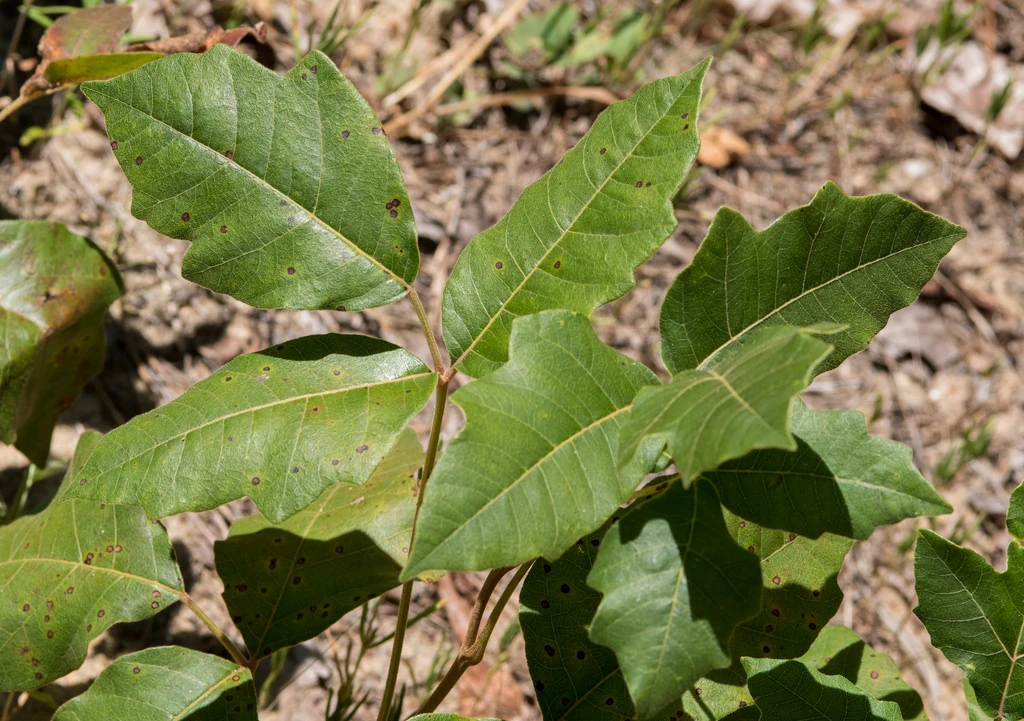
Invasive and Weedy Ivies
14. Ground Ivy (Creeping Charlie)
Often mistaken for a harmless groundcover, this fast-spreading plant is one of the more aggressive types of ivy found in lawns and gardens. It has scalloped leaves and small purple-blue flowers. While it’s low-growing, it forms dense mats that choke out other plants.
- Native Area: Europe and Western Asia (introduced to North America)
- USDA Growing Zones: 3 to 10
- Sun Exposure: Full sun to part shade
- Height: 1 to 2 inches
- Soil pH: Slightly acidic to neutral
- Soil Type: Moist, nutrient-rich soil
- Care Tip: Difficult to remove. Best managed with consistent hand-pulling or selective herbicides
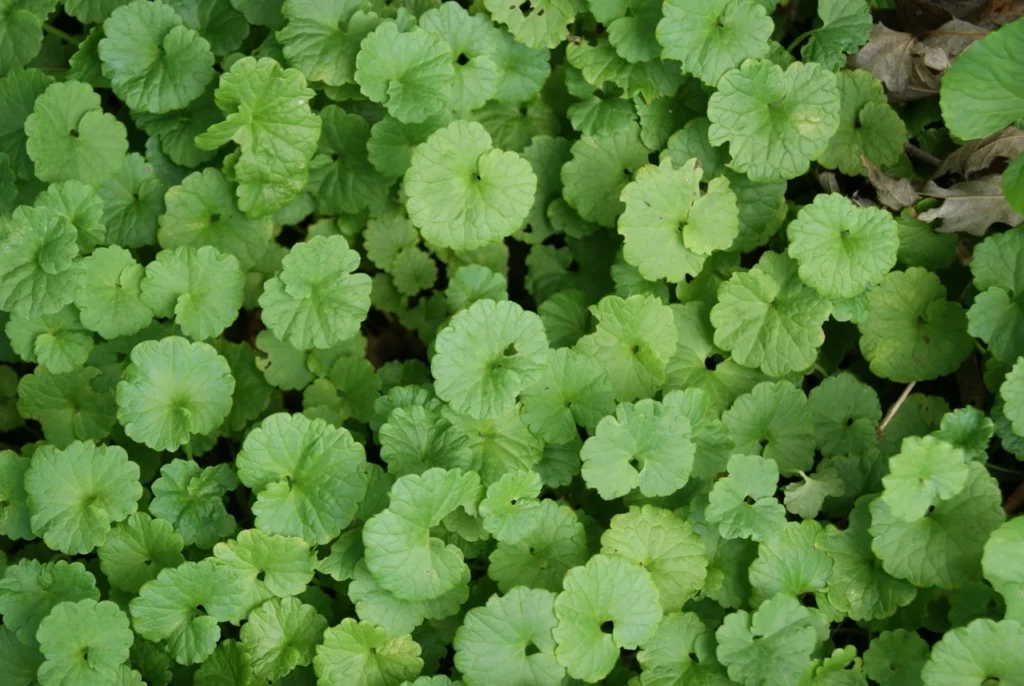
15. English Ivy (invasive outdoors)
While it’s popular in landscapes, English ivy becomes invasive when planted outdoors. It climbs trees, walls, and buildings, often smothering native plants and weakening tree bark. It’s considered a noxious weed in some U.S. states.
- Native Area: Europe and Western Asia
- USDA Growing Zones: 4 to 9
- Sun Exposure: Full sun to full shade
- Height: Up to 50 feet of climbing
- Soil pH: Slightly acidic to neutral
- Soil Type: Moist, well-drained
- Care Tip: Cut vines at the base to kill climbing stems. Regular pruning is essential to control spread
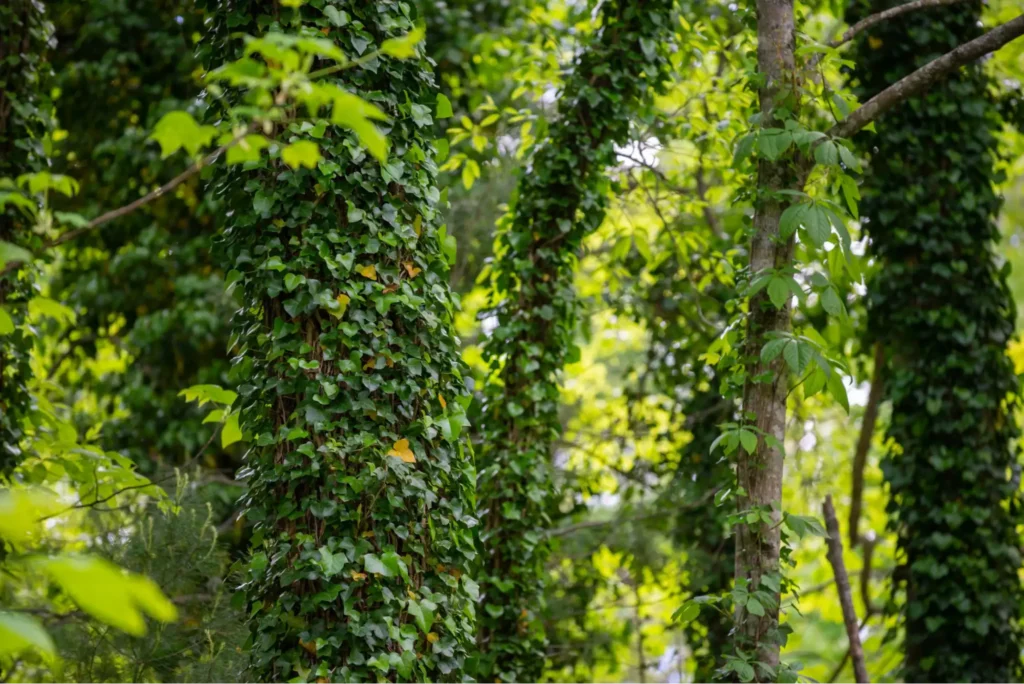
16. Five-leaf Akebia (Chocolate Vine)
Not a true ivy, but often confused with one due to its twining growth. This fast-growing vine has five-part leaves and fragrant purple flowers. It can quickly overtake fences and trellises and escape cultivation into forests or hedgerows.
- Native Area: East Asia
- USDA Growing Zones: 4 to 9
- Sun Exposure: Full sun to part shade
- Height: 20 to 40 feet
- Soil pH: Slightly acidic to neutral
- Soil Type: Moist, fertile, well-drained soil
- Care Tip: Prune hard after flowering to prevent it from becoming a weed. Avoid planting near natural habitats
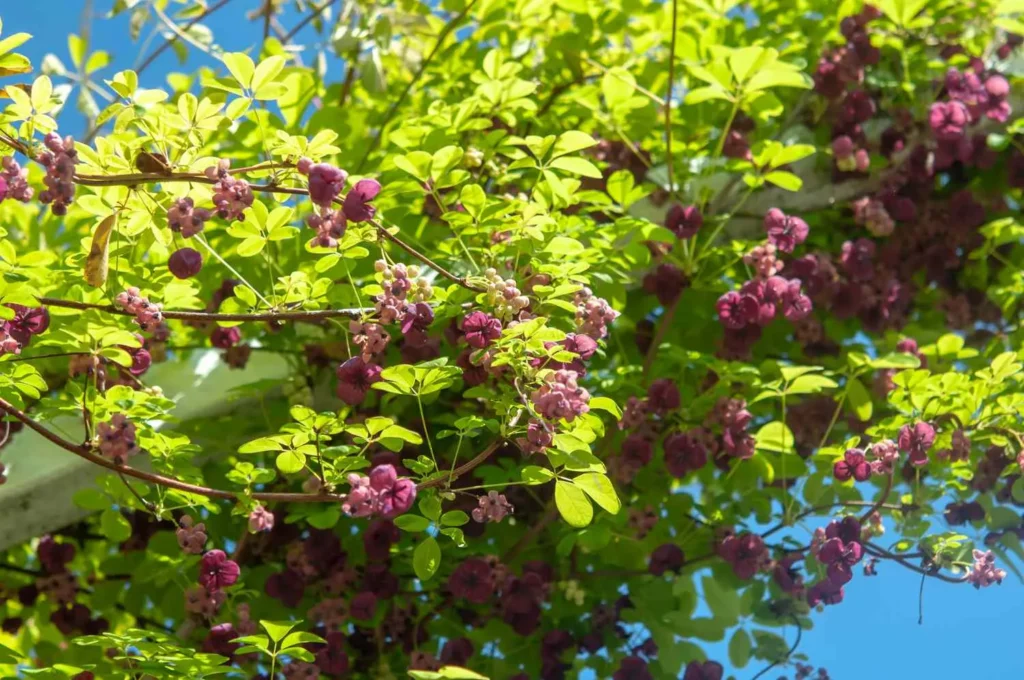
Poisonous vs. Harmless: How to Tell Ivy Apart?
Some types of ivy are perfectly safe to grow around kids and pets. Others, like poison ivy, can cause severe skin irritation with just a light touch. Knowing how to distinguish between them is crucial, especially when hiking, gardening, or selecting plants for your yard. Here are a few practical ways to spot poisonous ivy types:
- Leaf Grouping: Poison ivy typically grows in clusters of three leaflets. The phrase “leaves of three, let it be” is a helpful reminder.
- Leaf Edges: The edges may be smooth or wavy, and the surface often looks shiny.
- Stem Color: You may notice a reddish hue on the stem, particularly in new growth.
- Growth Habit: Poison ivy can grow as a low shrub, a groundcover, or a climbing vine.
- No Tendrils: Unlike many harmless climbing ivies, poison ivy climbs with small rootlets, not tendrils or twining stems.
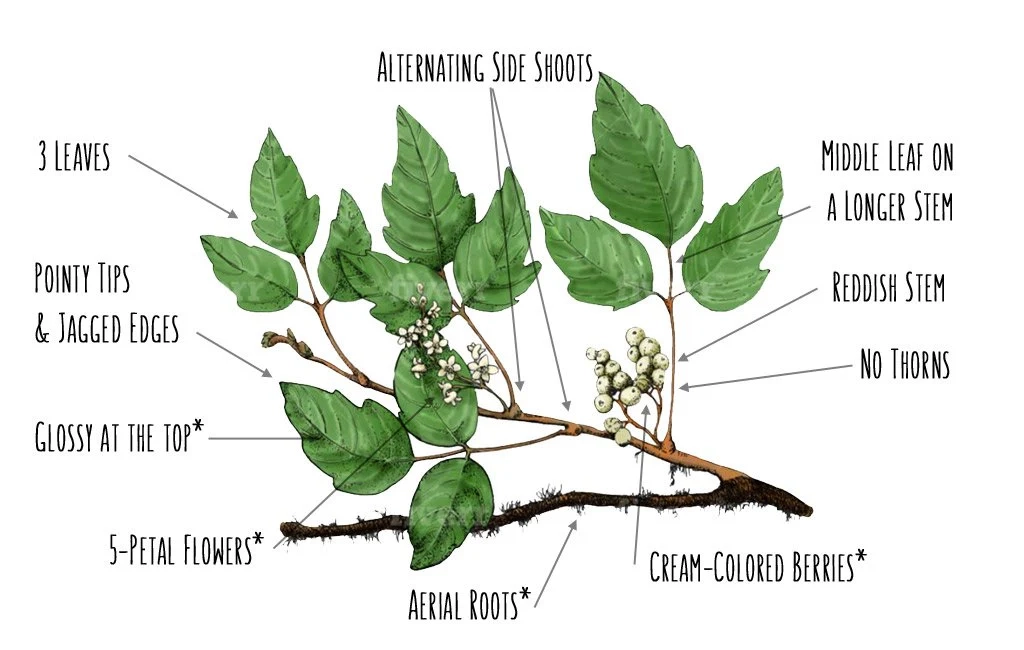
Visual traits of the poison ivy vine
Meanwhile, harmless ornamental ivies often have more lobed or rounded leaves, grow in larger groupings, and feel thick or leathery rather than tender. They also tend to have trailing or twining habits and are widely sold in garden centers as decorative plants. If you’re ever unsure, avoid touching the plant directly. Take a photo and use a reliable plant ID tool like Planteyes to check if it’s safe. It’s better to identify than to guess, especially when skin reactions or allergic responses are involved.
Conclusion
With so many types of ivy, it’s easy to confuse them. Hope this detailed guide will help you recognize the ones you want and avoid the ones you don’t. If you’re ever unsure, snap a photo with Planteyes and get instant help.
FAQs
How many types of poison ivy are there?
There are three main types of poison ivy: Eastern poison ivy, Western poison ivy, and Atlantic poison ivy. All three belong to the Toxicodendron genus and can cause skin irritation. They grow in different regions across North America but share similar features like three-leaf clusters and seasonal color changes.
What is the easiest ivy to grow?
Swedish ivy is one of the easiest ivies to grow, especially indoors. It’s low-maintenance, doesn’t climb aggressively, and thrives in bright, indirect light. English ivy is also prevalent, though it needs more pruning when grown outdoors.
Can the Planteyes app help identify ivy types?
Absolutely. The Planteyes app lets you snap a photo of any plant, including ivy, and gives you instant results with species details. It’s perfect for checking whether a plant is safe, decorative, or invasive – right on the spot.


